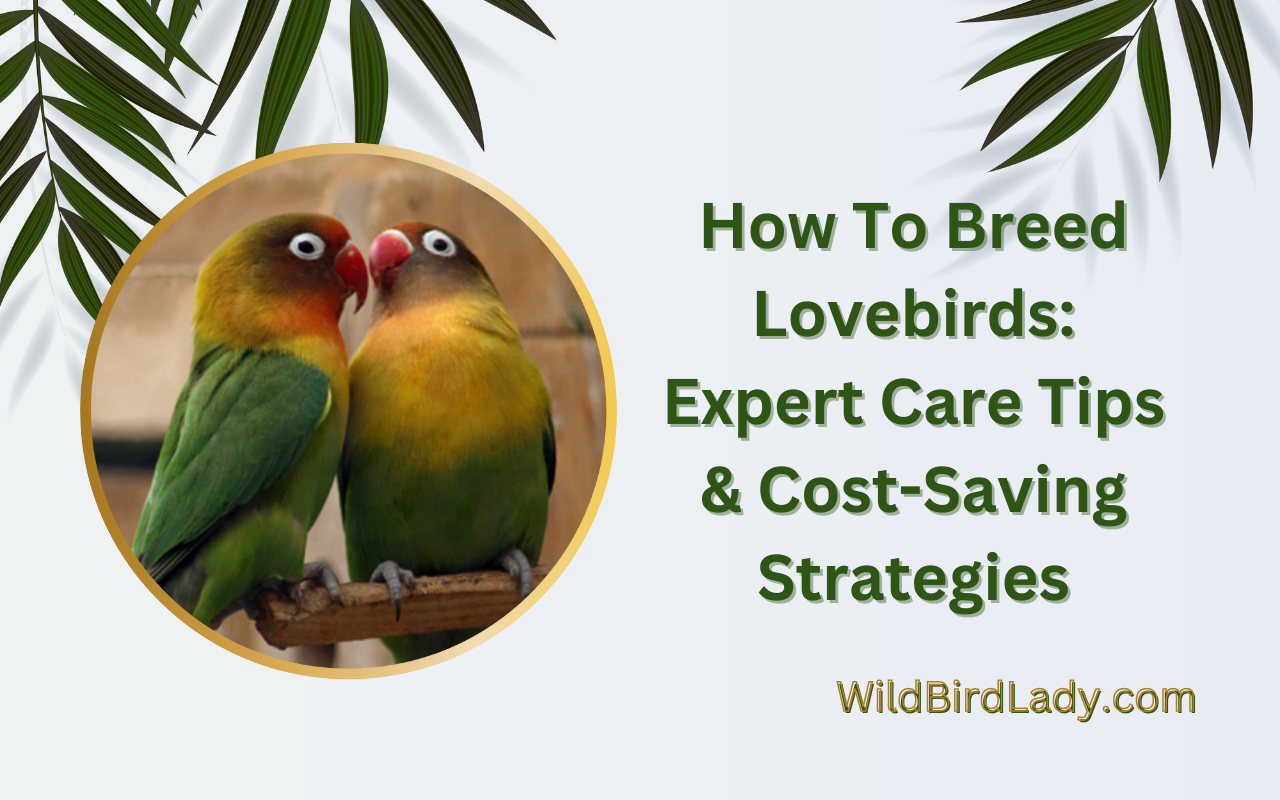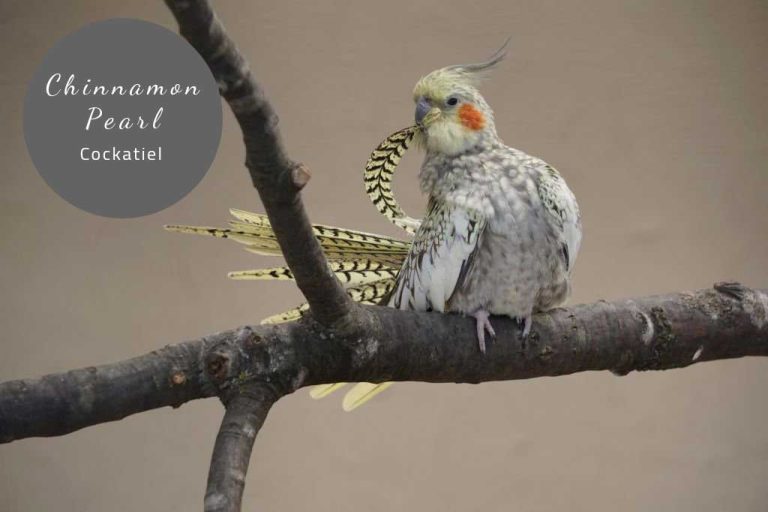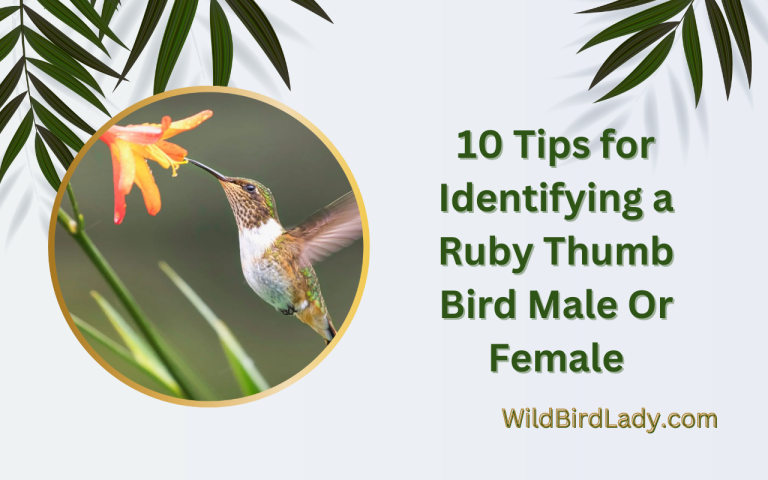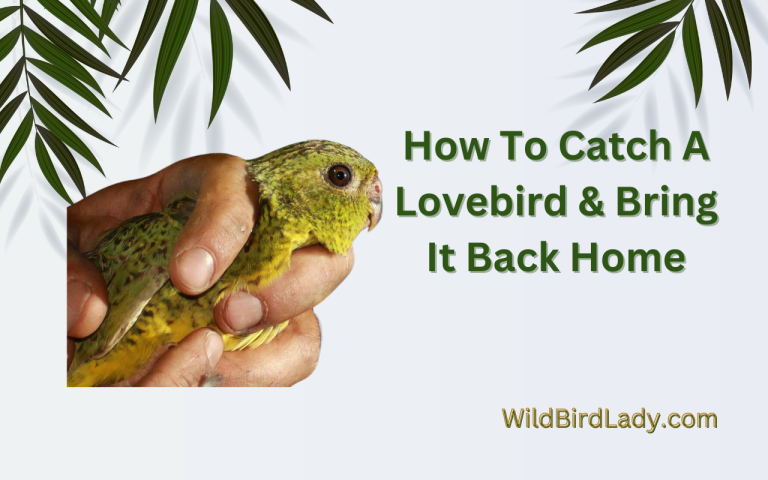How To Breed Lovebirds: Expert Care Tips & Cost-Saving Strategies
Lovebirds are one of the famous and beloved pet birds worldwide, admired for their charming personality, vibrant colors, and affectionate behavior. If you are an ardent bird lover, looking to breed lovebirds at home, then you have come to the right place.
Breeding lovebirds requires proper care, attention, and a suitable living space to foster and rear healthy babies. While housing lovebirds, you need to provide them with adequate nutrition, access to clean water, a clean and secure cage, and a stress-free environment to facilitate successful breeding. In this article, we will guide you through the essential aspects of breeding lovebirds at home, including everything from feeding to enclosure, and costs involved.
Choosing The Right Lovebirds For Breeding
Breeding lovebirds can be a fun and rewarding experience with the proper preparation and care. Choosing the right lovebirds for breeding is the first step in this process. Follow these expert care tips and cost-saving strategies for successful lovebird breeding.
1. Look For Healthy Birds
Choosing healthy lovebirds is crucial to successful breeding. Make sure the birds are alert, active, and have bright eyes. It’s important to also check the bird’s feathers, as healthy lovebirds should have a shiny and smooth coat. Stay away from lovebirds with any signs of mites, lice, or feather plucking.
2. Mating Pairs
When choosing lovebirds for breeding, purchasing a mating pair is best. This will ensure the birds bond and are more likely to breed successfully. If you already have lovebirds and want to breed them, make sure they are the opposite sex and know how to coexist peacefully.
3. Age Matters
Lovebirds are known to reach sexual maturity around 10 months of age. However, it’s best to wait till they are around 1-2 years old before breeding. Breeding lovebirds before they are ready can lead to health complications and unsuccessful breeding attempts.
4. Compatibility Of Different Species
There are different lovebird species, and choosing the right type for breeding is important. Pair the same species together to avoid hybridization and inbreeding. Some species can also be more aggressive than others, so it’s best to research their behavior before breeding them together.
5. Relationship Between Breeding & Colors
Breeding different colored lovebirds can lead to a variety of offspring colors. However, remember that breeding the same color mutations together can lead to genetic issues. Always be sure to research the breeding results before making a decision.
6. Proper Housing
It’s essential to have the right sized nesting boxes, cages, and equipment needed before breeding lovebirds. You’ll also want to ensure the temperature is between 65 – 85 degrees fahrenheit. Temperature regulation is essential for successful breeding.
7. Diet & Nutrition
Proper nutrition is crucial when breeding lovebirds successfully. Incorporate high-quality pellets into their diet, which should contain vitamins, minerals, and high protein content. Additionally, fresh vegetables, fruits, and cuttlebones should be included in their daily feedings.
8. Limit Stress
Lovebirds will breed less or even stop completely if they are experiencing chronic stress. Therefore, it’s important to ensure they have stable and quiet surrounding as well as plenty of space to move around.
9. Lovebird Health Monitoring
Keep an eye on your lovebirds’ health through regular checkups. Look out for any signs of illness, injury, or abnormal behavior. Immediate medical attention should be given when needed.
10. Conclusion
Breeding lovebirds is a challenging and complex process that requires proper preparation, research, and care. By following these expert care tips and cost-saving strategies, you can successfully breed lovebirds and ensure their long term health and happiness.
Setting Up The Breeding Environment
Breeding lovebirds can be a rewarding and exciting experience for bird enthusiasts. Setting up a breeding environment that fosters a healthy and happy bird family is critical to the success of the breeding process. Below are some key points to consider when setting up a lovebird breeding environment.
Cage Size And Location
- Lovebirds require a spacious cage to be comfortable and breed successfully. The minimum cage size for a breeding pair of lovebirds should be 24 inches long, 16 inches wide and 16 inches high. Note that the bigger the cage, the better; this provides more room for the birds to fly, nest and play.
- The location of the cage should be in an area of the home that has minimal noise and disturbance. Avoid placing the cage in direct sunlight, drafts or damp areas.
Nest Box And Perches
- A nest box is necessary for lovebirds to breed. The box should be placed inside the cage, taking up approximately a third of the floor space. The entrance hole should face the wall to provide privacy and protection.
- Two high and one low perch should be provided to help the birds exercise and prevent sore feet. Some suitable perch materials include natural branches, ropes or wooden dowels.
Temperature And Humidity
- The ideal temperature for lovebirds is between 65°f and 80°f. Humidity levels should be around 35% to 55%. Installing a thermometer and hygrometer inside the cage can help keep track of the temperature and humidity levels.
- It is important to note that lovebirds are sensitive to sudden temperature changes and drafts. Keep the cage away from doors or windows that can experience sudden changes in temperature or humidity.
Lighting
- Lovebirds need natural light exposure on a daily basis to stay healthy and regulate their breeding cycle. A variety of natural spectrum lights designed for birds are available on the market. Exposing the birds to these lights for 10 to 12 hours per day is recommended to simulate natural daylight.
Breeding lovebirds requires a combination of a healthy environment, proper care and attention to detail. By considering the above points, you can create the perfect environment for your lovebirds to breed and thrive.
The Breeding Process
Breeding Lovebirds: A Delightful Experience
Breeding lovebirds can be a delightful experience for bird enthusiasts. These beautiful birds’ vibrant plumage and affectionate nature will fill your home with joy and happiness. Raising lovebirds from eggs to fully developed birds is an exciting journey requiring attention to detail, patience, and care.
You’re in the right place if you’re eager to learn about the breeding process and the best cost-saving strategies.
Preparing For Breeding
Before you begin breeding lovebirds, it’s crucial to ensure that you have the necessary equipment and a suitable breeding environment. Here are a few important tips to keep in mind:
- Choose a spacious cage with a minimum size of 18″x18″x24″ to allow your lovebirds to comfortably move around and fly.
- Use natural nesting materials such as coconut fibers, straw, and feathers to line the nest box.
- Provide your lovebirds with a healthy and balanced diet of seeds, fruits, and vegetables to support their breeding process.
- Dedicate a separate cage for a male and female lovebird for breeding.
Identifying The Best Pair
Selecting the best pair of lovebirds is crucial to ensure successful breeding. Here are key things to keep in mind:
- Choose lovebirds that are at least one year old.
- Look for birds that are healthy, active, and display affection towards each other.
- Observe the birds’ behavior; the male often feeds the female and displays mating behavior.
Once you have identified the perfect breeding pair, it’s time to get started with the breeding process. Here are some tips to help you along the way:
- Provide the breeding pair with privacy by covering their cage to encourage breeding behavior.
- Monitor the nest box regularly to ensure that the eggs are laid properly.
- It typically takes 23-30 days for the eggs to hatch, so patience is key.
- After hatching, the chicks require regular feeding every two to three hours.
Breeding lovebirds can be a rewarding and fulfilling experience for bird lovers. By following the tips we’ve shared above, you should be well on your way to raising healthy and happy lovebirds. Remember always to give your birds adequate care and attention and stay observant throughout the breeding process for a fruitful experience.
Health And Safety In Breeding Lovebirds
Breeding lovebirds can be a fun and rewarding experience, but it also requires a lot of care and attention. Creating a safe and healthy environment for them to flourish is essential. This section’ll discuss some essential tips surrounding health and safety in breeding lovebirds.
Providing Optimal Living Conditions
- Lovebirds should be kept in a large cage that is spacious enough to allow for plenty of movement and flapping.
- Use a cage with vertical bars to facilitate climbing and exercise.
- The cage should be well-ventilated as they need fresh air regularly.
- Place the cage away from doors and windows where temperatures can fluctuate too dramatically.
- A comfortable temperature range is between 70-80°f; anything below or above this range could cause health problems.
- Provide fresh food and water daily. Regularly clean the cage and remove any uneaten food.
Cage Safety Precautions
- Keep the cage away from other pets in the home, as they can cause stress and disturbance to your lovebirds.
- Avoid using paints, glues, or chemicals near the cage as they can cause toxicity.
- Ensure that the cage bars are appropriately spaced to prevent escape or injuries.
- Regularly check for any openings or holes in the cage, as lovebirds are intelligent escape artists.
Health Monitoring And Care
- Lovebirds are susceptible to various health issues including feather picking, respiratory issues, and obesity.
- If you observe any signs of illness, consult an avian vet immediately. Some symptoms include; breathing difficulties, loss of appetite, change in droppings, constant scratching or biting, and aggression.
- Clean and sanitize the cage often, including the perches, toys, and food bowls, to prevent the spread of disease.
- A balanced diet plays a crucial role in the overall health of your lovebirds. Feed them with fresh fruits, vegetables, and a specialized pellet diet approved by your vet.
With these health and safety tips, you can ensure your lovebirds thrive in a safe and nurturing environment. Remember, proper care and attention are vital to breeding healthy and happy lovebirds.
Cost-Saving Strategies For Breeding Lovebirds
Breeding lovebirds is an exciting experience, but it can also be expensive. In this section, we will take a look at some cost-saving strategies for breeding lovebirds. Whether you are a seasoned breeder or a novice, these tips can help you save money without compromising the care of your lovebirds.
Consider Building Your Own Breeding Cage
Building your own breeding cage is a fantastic way to save money. You can use materials from around your home to construct a cage, and it takes only a few hours to set up. Here is what you need to do:
- Get some wire mesh and wooden boards.
- Cut them to your desired size.
- Assemble them using screws or nails.
- Place a nest box and some food and water containers inside the cage.
By building your own breeding cage, you not only save money, but you also have the satisfaction of creating something with your own hands.
Grow Your Own Food
Lovebirds love fresh fruits and veggies. Instead of buying these items from the store, consider growing your own. You can save a lot of money by doing this. Here are some fruits and vegetables that are great for lovebirds:
- Apples
- Grapes
- Carrots
- Spinach
- Kale
- Peppers
By growing your own fruits and veggies, you not only save money, but you also provide your lovebirds with fresh, healthy food.
Buy Supplies In Bulk
Buying lovebird supplies in bulk is a fantastic way to save money. You can purchase items like seed, bedding, and toys in large quantities and save a lot of money in the process. Here are some items you should consider buying in bulk:
- Seed
- Bedding
- Toys
- Nesting materials
- Water and food containers
By purchasing these items in bulk, you not only save money, but you also ensure that you have a steady supply of these items on hand.
Breeding lovebirds is a fantastic experience, but it can also be expensive. By following the cost-saving strategies outlined in this section, you can save money without compromising the care of your lovebirds. Consider building your own breeding cage, growing your own food, and buying supplies in bulk to save money.
These tips are great for both seasoned breeders and novices alike. Happy breeding!
Frequently Asked Questions
When Can Lovebirds Start Breeding?
Lovebirds usually reach sexual maturity around 10 months old. However, it’s best to wait until they are at least a year old before breeding them to ensure they are physically and emotionally mature enough.
What Should You Feed Breeding Lovebirds?
Breeding lovebirds require a balanced diet of seeds, fruits, and vegetables. Feed them 2-3 times a day. Consider adding a calcium supplement since breeding can deplete the calcium stores in their body.
How Big Should A Lovebird Cage Be?
A lovebird cage should be spacious enough to allow for flying and playing. It should be at least 18 inches wide, 18 inches long, and 24 inches tall. Larger cages are always better as they provide more space for activities and mental stimulation.
What Is The Cost Of Breeding Lovebirds?
The cost of breeding lovebirds varies based on factors such as the cost of a pair of lovebirds, cage, food, and veterinarian bills in case of any medical emergencies. A pair of lovebirds can cost between $100-$200, and supplies can cost an additional $200 or more.
Conclusion
Breeding lovebirds can be a rewarding and enriching experience. By providing proper care, nutrition, and housing, you can help ensure the success of your lovebird breeding efforts. Understanding the various breeding stages, from courtship to egg-laying to chick-rearing, is also essential.
As with any pet, lovebirds require a significant time, energy, and expense commitment, so be sure to consider your decision to breed these beautiful birds carefully. Remember that each lovebird has its own unique personality, and with patience and dedication, you can create a strong bond with these charming creatures.
Whether you are breeding lovebirds as a hobby or with the intention of selling them, always prioritize the well-being of your feathered friends. With love, care, and a little bit of knowledge, you can embark on an exciting journey into the world of lovebird breeding.
Read Also: How To Build A Lovebird Aviary Like A Pro








